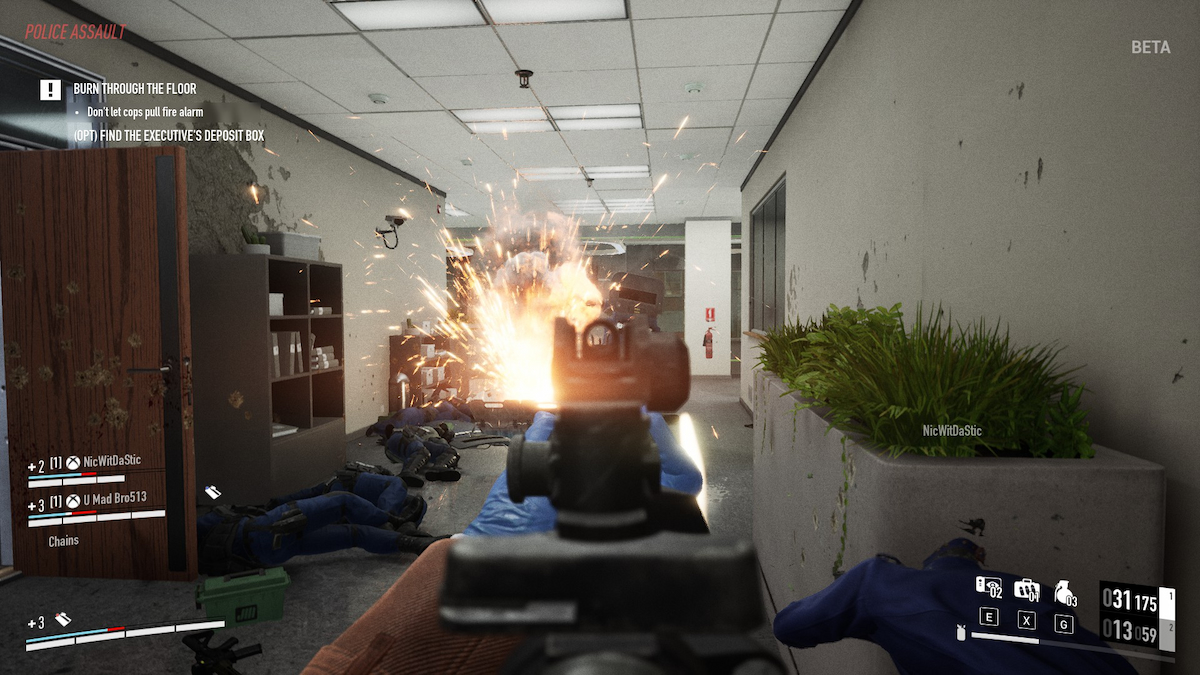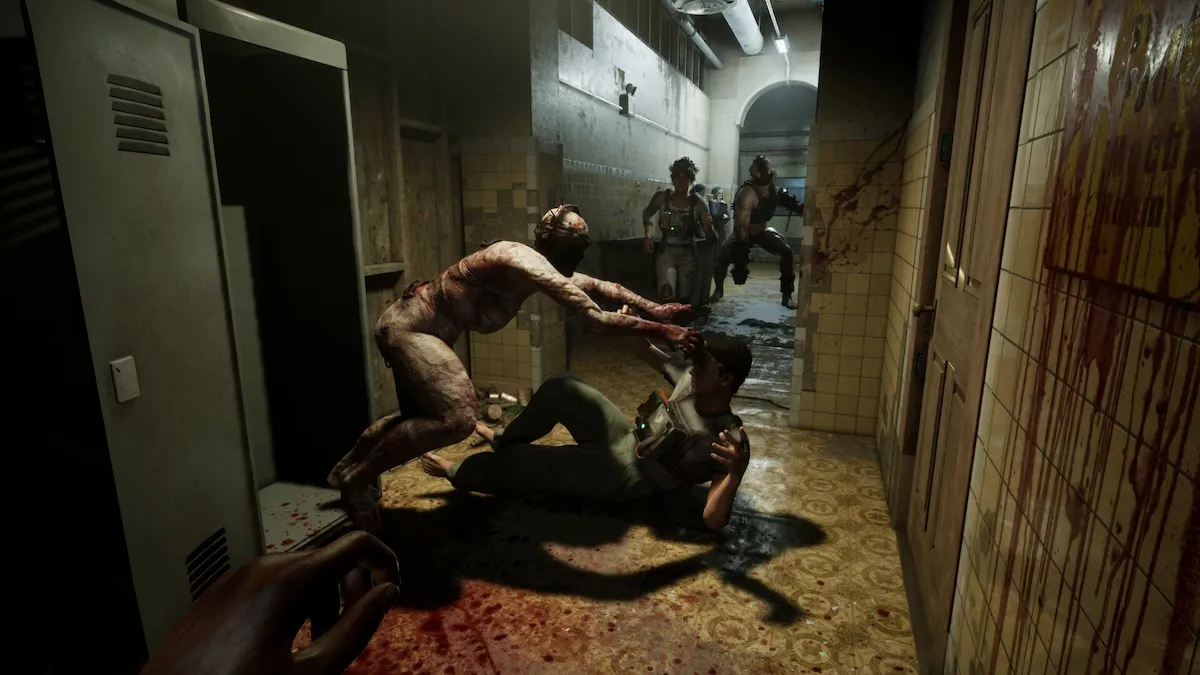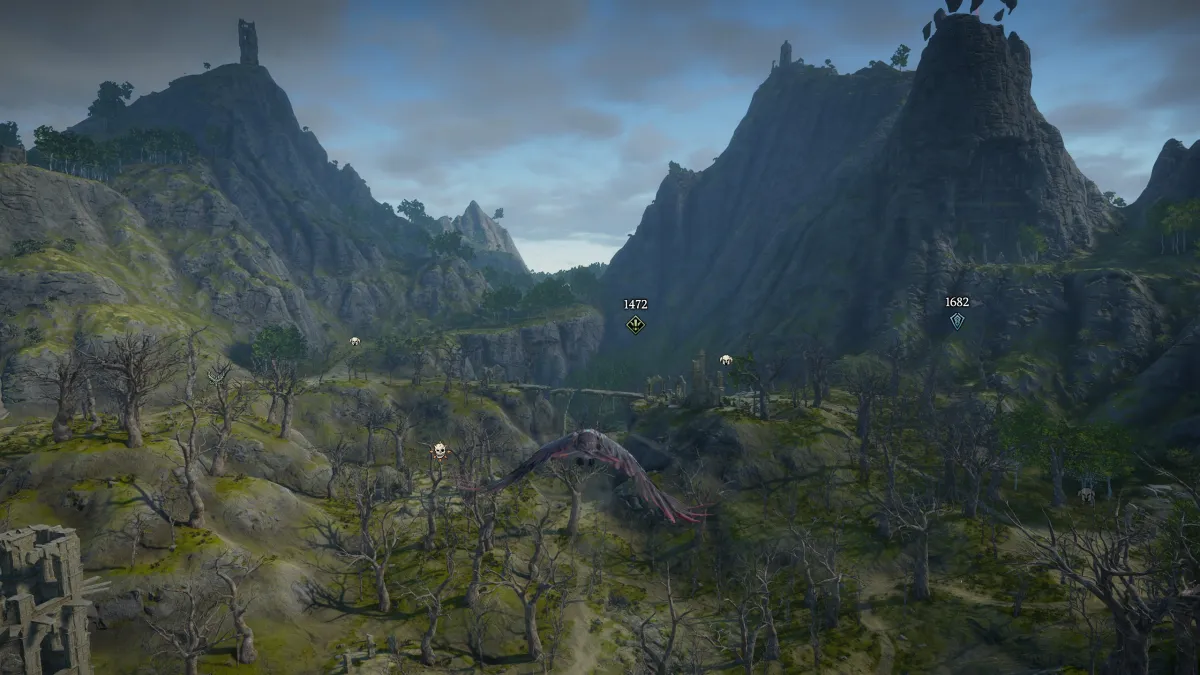IncGamers and Worldofwar.Net were fortunate enough to be invited to a recent The Lord of the Rings, The Battle for Middle-Earth Community Day held at Electronic Arts’ Los Angeles facility. We weren’t alone as other major RTS fan sites were in attendance to get the inside scoop on this highly anticipated Lord of the Rings RTS game.The first half-day of the event included a pizza dinner and a private screening of The Lord of the Rings, The Return of the King in EA’s on-site theater. From there, the attendees were whisked back to a luxurious four-star hotel in Marina Del Rey to get some quality shut-eye for the big day. A big day indeed, as EA pulled out of the stops as they showcased the workings behind The Battle for Middle-earth.After a quick breakfast in EA’s cafeteria, we were led back to the same theater for the official start to the day. Mark Skaggs, VP and Executive Producer of LoTR: The Battle for Middle-earth welcomed us and started things off with an introduction of the living map that EA featured during this past May’s E3. The map is a matte painting by Richard Kriegler, which is actually created with the game’s level editor. Mark mentioned that part of the inspiration for the map came from a scene of Never-Never land in the movie Hook. But what struck me as the most logical inspiration was when Mark reminded us of all the times we flipped back to the front map when reading The Lord of the Rings books. Their goal is to make the map an integral part of the gameplay experience. Seeing it on a large screen really helped me to appreciate the incredible detail of this living map. The black smoke billowing from Mordor, mist moving over the land, and the undulating ocean waves are all signs that the developers view this project as more than just an ordinary RTS game. I personally think that you’ll start to see more highly detailed game maps in video games as developers think of creative ways of broadening the usage of next generation game engines. The map is an extremely important part of The Lord of the Rings literature and it’s apparent that EA has successfully conveyed this importance with full-fledged fervor in the TBFME.Character DevelopmentFrom there, Mark started to show us the character development within the game. The big focus is on the emotional detail of the units and the examples we were shown exemplify how the developers are trying to evolve the core element of any RTS game, which are the fighting units.The first example was a rather content butcher, who is whistling while manning the output of a meat factory (food resource structure). Every time the butcher successfully hoisted a slab of meat onto a hook, he rubbed his hands together in satisfaction. Another example of this type of character development was a scene where Treebeard catches fire from flaming arrows, panics and flees to a riverbed to douse himself. Unfortunately, the riverbed is dry and Treebeard ends up jumping into a dry riverbed and burns up in a cloud of dust.Other examples are a Troll rubbing his head after being thrown to the ground by a nearby explosion, and troops cheering in unison after defeating a hostile creature. You can expect these types of character emotions to be prevalent throughout the entire game.Mark stated that a major challenge is making sure organic characters look right when they’re interacting with humans. This also holds true for the quantity of units on the screen and how they react to each other. A great example of this is the work done on the Army of the Dead. Mark described an initial problem where the Army of the Dead looked like ticks on the battlefield as they swarmed around individual units. This obviously had to be fixed and from I saw, it’s clearly no longer a problem. In the scene we were shown, the Army of the Dead quickly sweeps through a battlefield and proceed to wipeout a large number of units in their wake. The animation of this scene was quite impressive as the translucent units rapidly cut through enemy forces. This particular scene took roughly two weeks to complete, which comes as no surprise since it’s a flawless execution of emulating the third film’s Army of the Dead.While I’m on the topic of giving detailed examples of character development, another impressive scene was of a Balrog clearing out enemy troops with one surviving soldier left, literally shaking in his boots. The Balrog stomps towards the soldier, picks him up and vaporizes him to dust in his clenched fist. The crowning touch is the Balrog rubbing his fingers together as he drops the remaining dust of the soldier. Nice!The bottom line to all of this is that EA is making sure the characters are more than just a mass of cookie-cutter troops and one-dimensional creatures. If these examples are indicative of what gamers can expect in character detail, then they have successfully accomplished their mission of breaking the mold in RTS character development.Faction Buildings and UnitsDustin Browder, Game Design Director went into more gameplay elements with a focus on base-building or faction buildings. The first area of discussion was the subject of pre-formed base layouts, which are designated areas for placing unit-generating buildings. These pre-a*igned areas eliminate having to figure out where to drop buildings for creating units. It’s an obvious attempt to reduce one of the barriers that casual gamers may face when playing an RTS game for the first time. Some RTS purists might find this limiting but it’s really more of a streamlined process to alleviate the worry about where to place buildings so more time can be spent on battle-related decisions such as unit choices and quantity. I can’t argue with this direction since it results in more involvement with the battle elements of the game.It should be noted that it’s not completely “base-building for dummies” since base camps can be captured so it’s important to defend these encampments, as well as trying to either take or destroy your opponent’s camps. Each camp has a central building (keep) with unique powers. For example, if the keep is not destroyed then the opponent can return to the camp and rebuild their buildings. If the keep is destroyed but not the buildings, then the keep will rebuild itself. If you’re in a really destructive mood, you can destroy an entire camp (destroy all of the buildings plus the keep). Experience is actually gained from destroying buildings and a large amount can be earned by destroying entire camps or fortresses. The only drawback to this that it costs big bucks to build new structures so it may be better just to take a camp.Another item that’s stressed with faction buildings is quality over quantity, which prevents the game from becoming a click-fest. For example, it’s better to create one level 3 building instead of three level 1 buildings since units are produced on a cheaper and faster scale this way. The advantage no longer goes to the guy who produces the most buildings. The higher-level buildings cost more so this should prevent a base-building race from breaking out during a game.We were then shown a “zoo” level, which was a layout of all the key objects (characters, units, buildings, etc.) within the game. This is the place where the development team can review the functionality, interaction, and art of objects in the game.An example given on how this is put to use was a series of Rohan archery ranges. The game has experience a*ociated with buildings so this example related to the art of three different level archery ranges (basic, mid and advanced). The higher level of archery range provides better defensive powers, cost less to make archers, and takes less time to build units. Mark pointed out that the inconsistency of the art of the mid-range and advanced archery ranges. The mid-range was built with walls of stone and wood, while the advanced range only had wood slats, which wasn’t consistent with the archery levels. This was brought up in the design review and the future design of the advanced archery range will now include stone as part of its design.We were also able to see structures from Isengard and Mark provided some insight on the strategies a*ociated with these structures:Warg Pit – used for building Wargs, which gives your army an advantage in speed. Groups of five Wargs with riders can be produced with this structure. A neat tidbit is that the Orc riding a Warg can be killed and the Warg will continue to run around and wreak havoc to anything around it. So when you take out a Warg-riding Orc, don’t forget to wax the Warg too. It should be noted that there’s a waypoint system for pre-a*igning paths for newly built units.Lumber Mills – needed to harvest trees that have been cut down by your army of Orcs. The lumber mills are rather strategic since you have to capture areas near forests to use them. The key point is that you must defend them, which can be tricky when your Orcs are busy awakening angry Ents in the same forest that you’re trying to clear-cut.The rest of the Isengard goodies shown were their nice selection of battle tools, which included battery rams, siege ladders, ballistae, and explosive mines. This is the only faction that will have gunpowder in their a**nal.We were also treated to seeing a Fell Beast in action. Some of the key design points were to make sure multiple Fell Beasts do not clip when flying near each other, as well as making sure they don’t fly into walls. So the developers had to create a unique path-finding system, which was shown through visual waypoints. Another part of this was the implementation of realistic wing movements. They were able to make the Fell Beast’s wings flap faster when increasing its elevation and then glide when it reaches higher elevations. The cool thing is that the Fell Beast can swoop down on an enemy unit, pick them up and then drop them onto enemy troops. The funny thing is that we saw this in action with the Fell Beast picking up an Orc and then dropping him to the ground, but the Orc ended up landing on his feet to fight another day.Resources, Money, Health and ExperienceThe other area that’s been streamlined is resources and money. The monetary system is comprised of a central resource pool where resources are exchanged for money. From there, you can use the money to buy upgrades for your unit-building structures. Collectible resources consist of food, iron, gold, and lumber (evil sides only – good guys don’t chop down trees!). Gold is collected for certain actions such as saving towns, killing enemy forces, slaying monsters, etc. This simplified system is going against the grain of traditional RTS games but again, the focus is on the battles with less time spent on worrying about collecting money and managing resources.While I’m mentioning evil, the sides comprise of the following: Good = Rohan and Gandor; Bad = Mordor and Eisengard. There is no Rivendall faction so Elves have been pulled into the Rohan side. The northern section of Middle-earth has a limited role in the game so as far as I know, you won’t be able to gather an army of Hobbits for your planned sieges.On the subject of unit health, there will be health meters for hordes (number of units alive). There will be individual unit health but this will be minor and rather inconsequential compared to horde’s overall health. Hordes will have the capability of reaching 4 levels of experience while heroes can reach 10 levels. The victory system is currently being worked on but right now all units share experience gains. Gained experience will carry also over from mission to mission in the single player game. The idea is to have the player build up an army of experienced units, which introduces the tactical issues of knowing when to use elite forces. Do you risk them by summoning them to patch a break in your battle lines or do you save them for bigger battles? There will also be stat bonuses, which give you the ability to replace dead units and heroes will have the ability to heal themselves.The user interface is not final yet but the version we saw was efficiently in its design by only showing the necessary information. A palantir is located in the lower left corner, which displays the powers of heroes and troops. The One Ring (evil) and Even-star (good) also appear in this space. A radar is located on the bottom right while a status bar runs across the bottom of the screen. Spells appear vertically on the left side and heroes are on the right.While I’m mentioning heroes, there will be nine available to play. The developers are currently working on an easy way to identify heroes on the battlefield. One idea is to have a protective barrier around a hero so enemies can only get so close to them, which would make it easier to spot them in a chaotic battle. Other ideas are a glow emanating from the hero or a decal underneath the hero.The game will not have super weapons per se. Spells such as the ability to call up a Balrog or Eagles will be earned only when you’re winning a hard fought battle so these powerful spells will only serve as more of a crowning blow for an imminent victory.Part 2 will continue tomorrow and you can download the first 5 minute video interview with Senior Producer Harvard Bonin. Tomorrow the article will continue and will also include a video interview with Mark Skaggs, Vice President and Executive Producer of The Lord of the Rings, The Battle for Middle-Earth.
Read Article Payday 3: Closed Beta preview – Calling all criminals


Category:
Previews
Payday 3: Closed Beta preview – Calling all criminals


